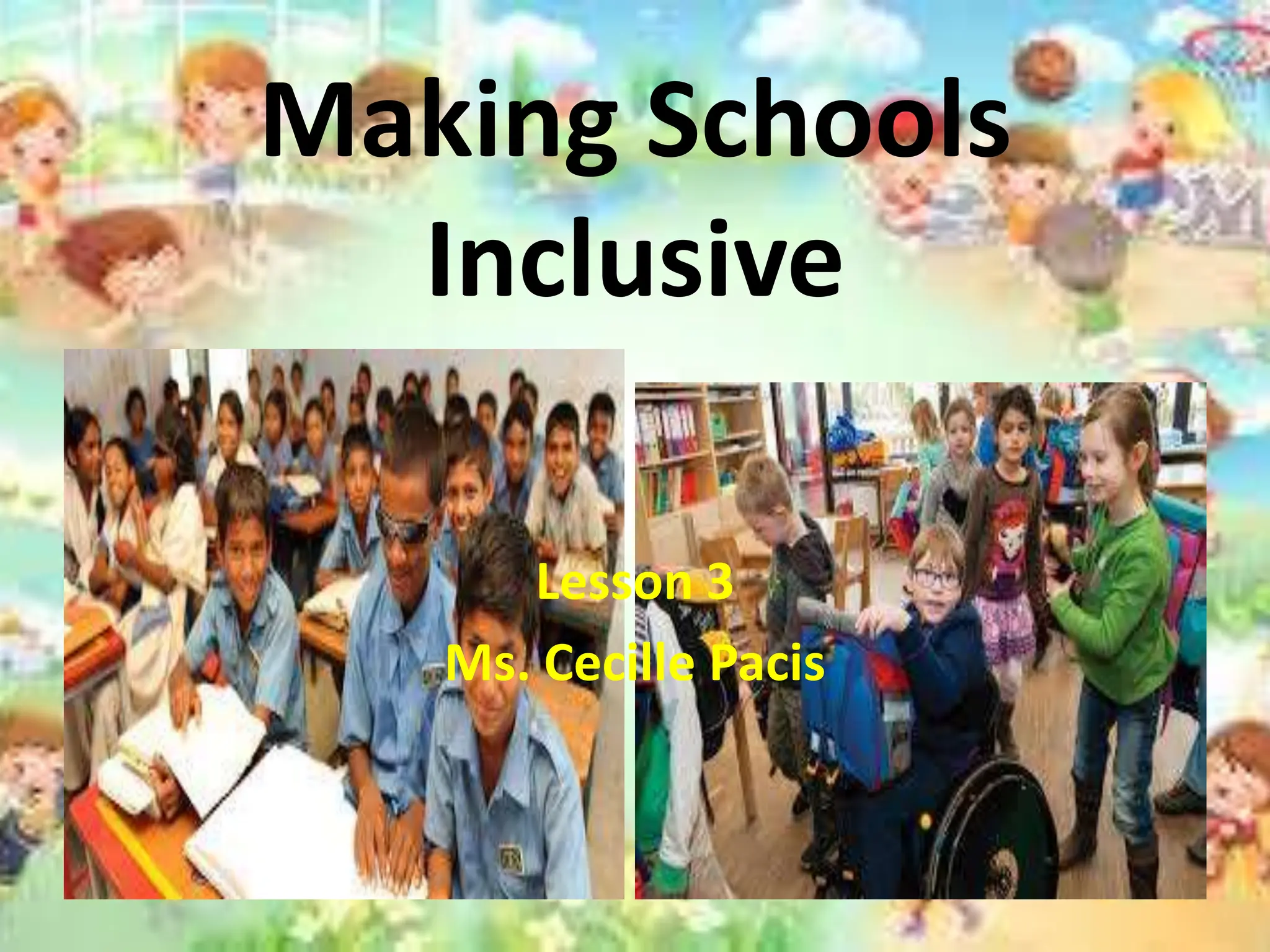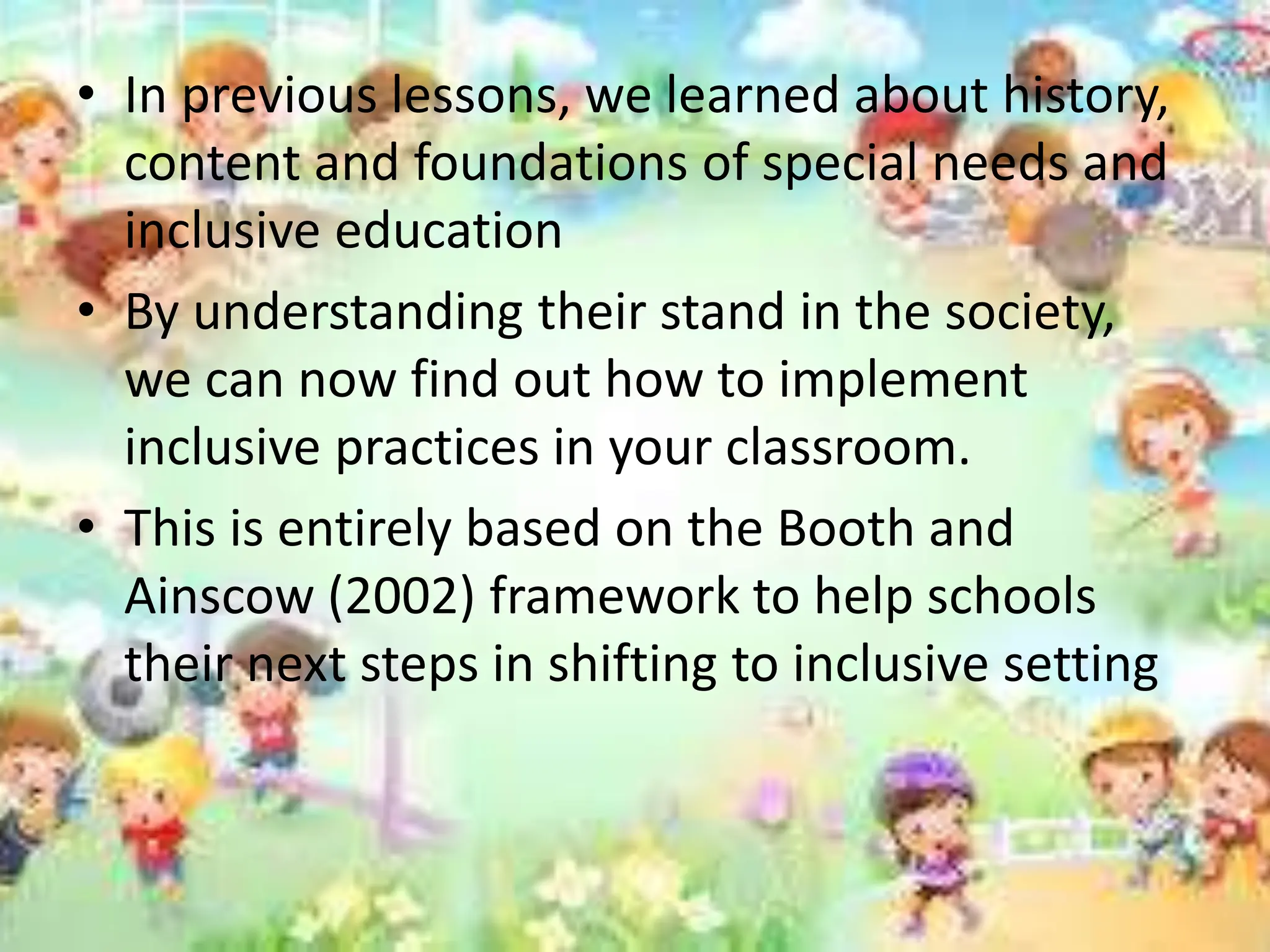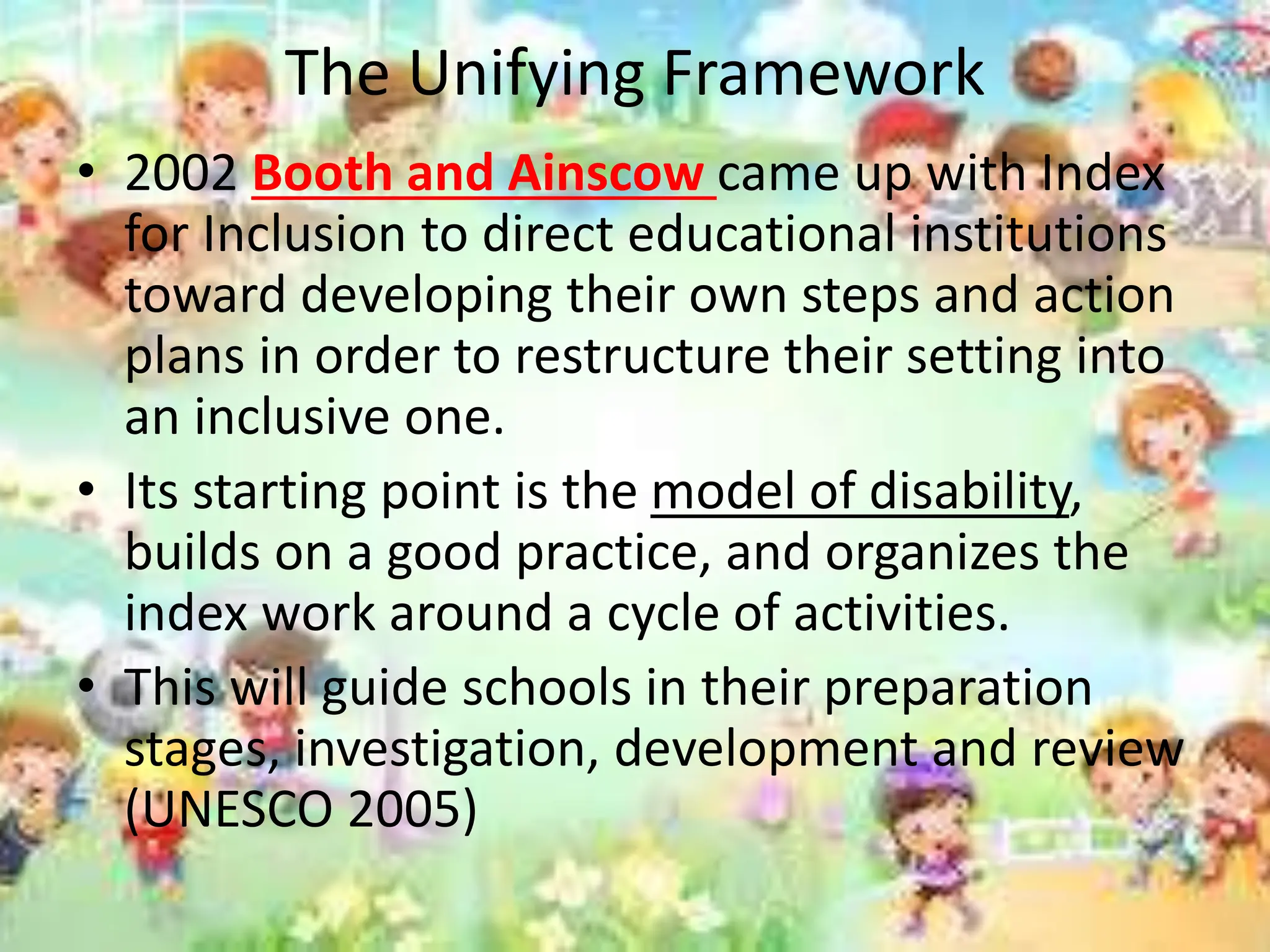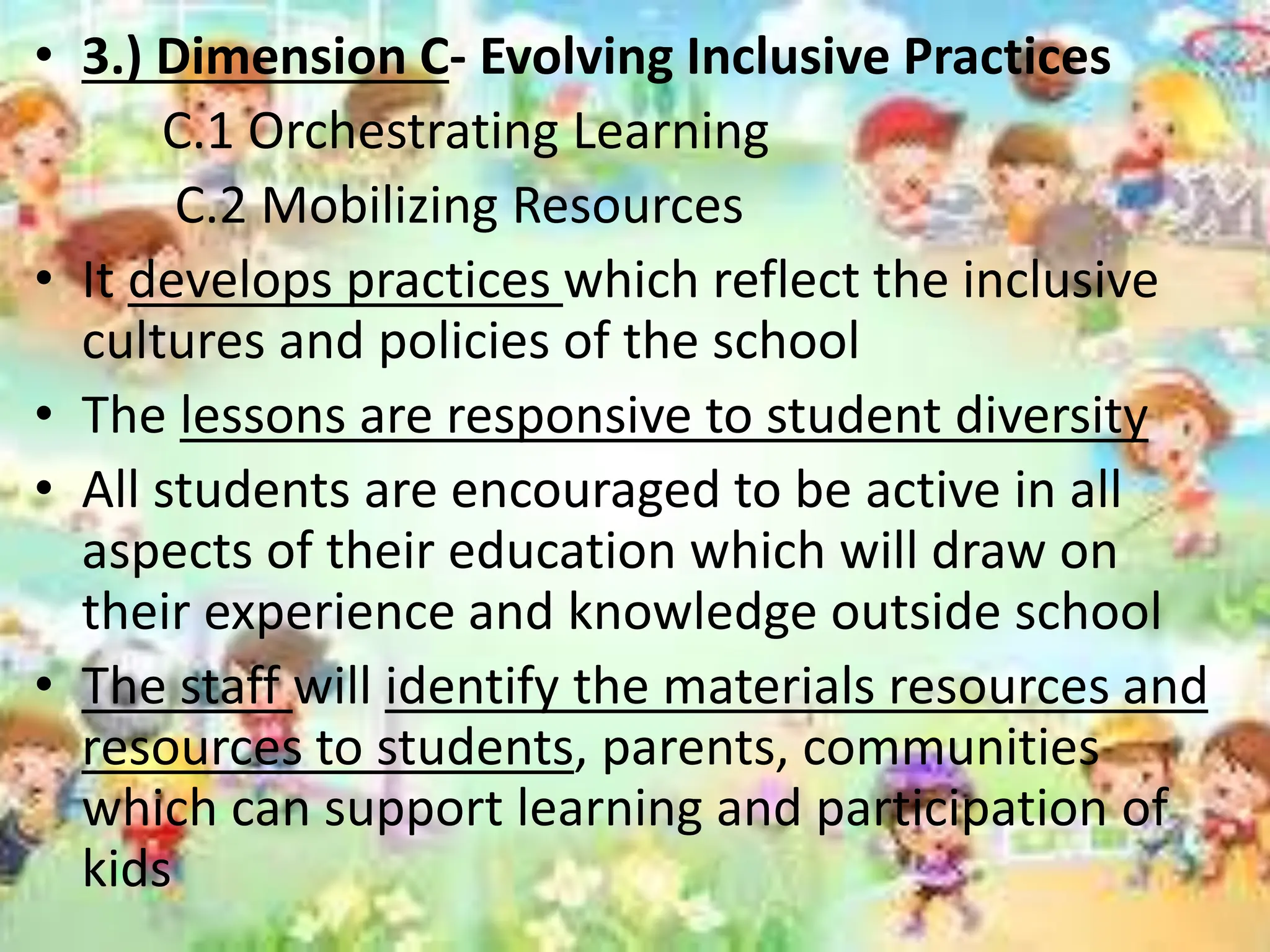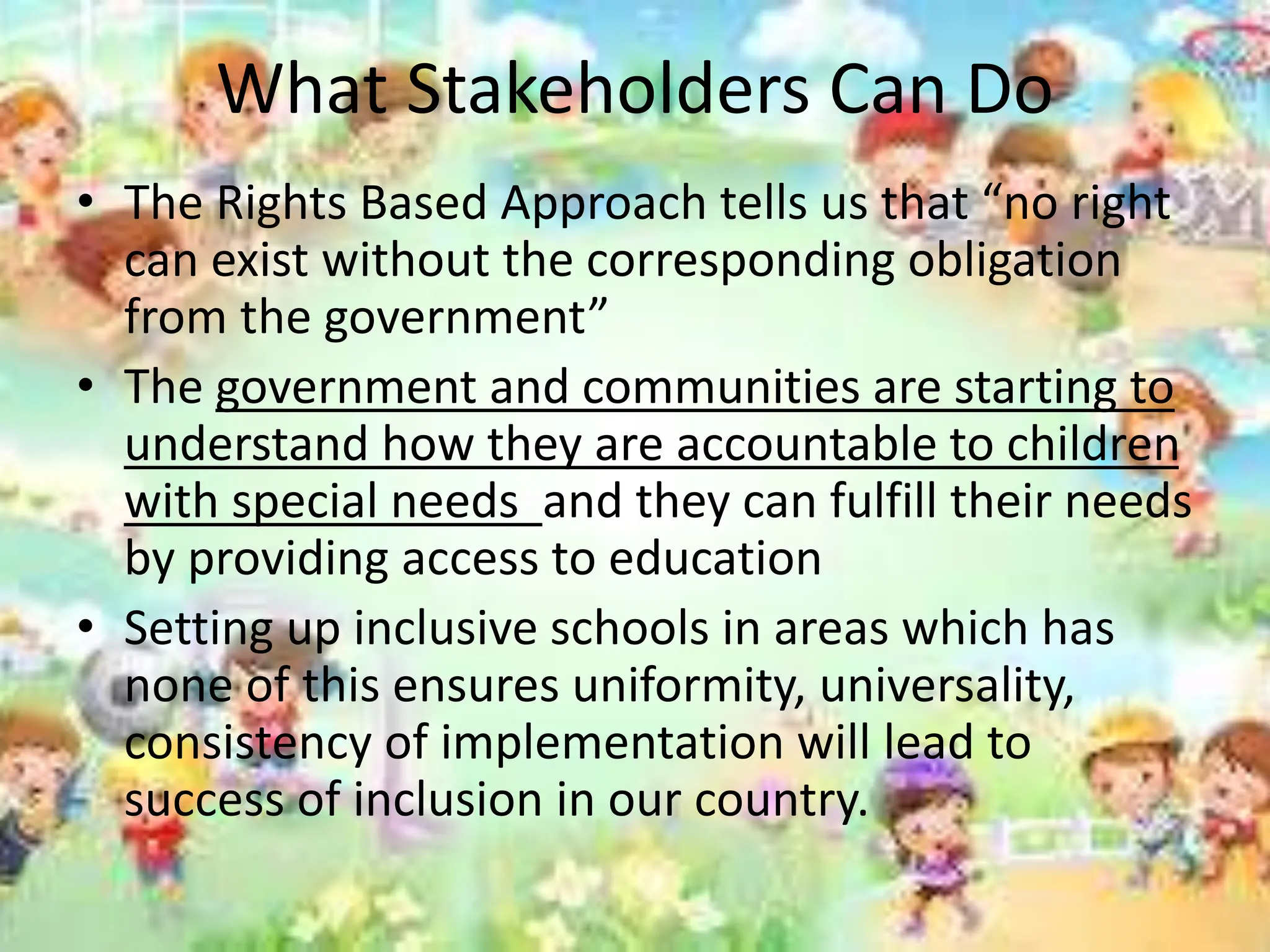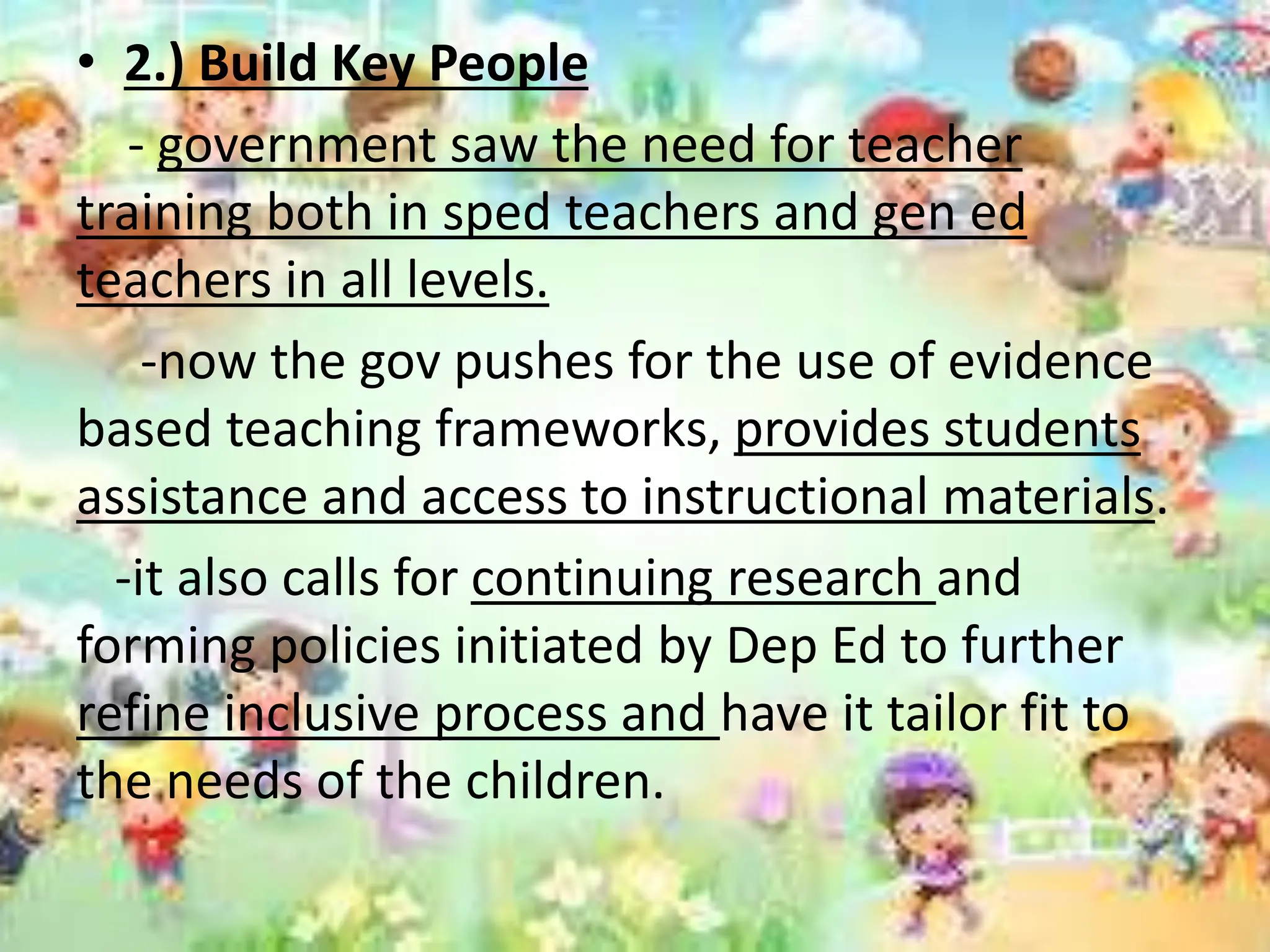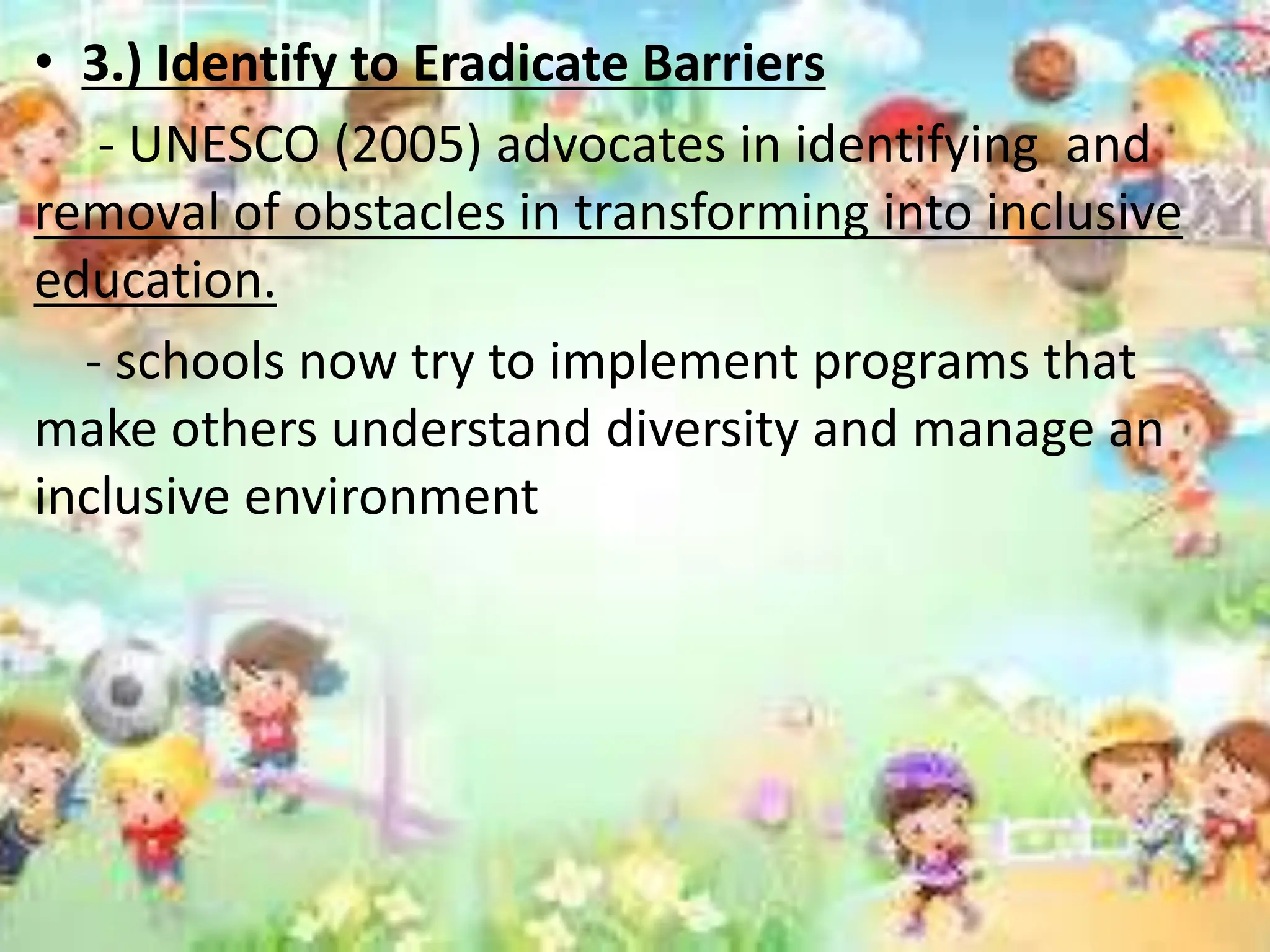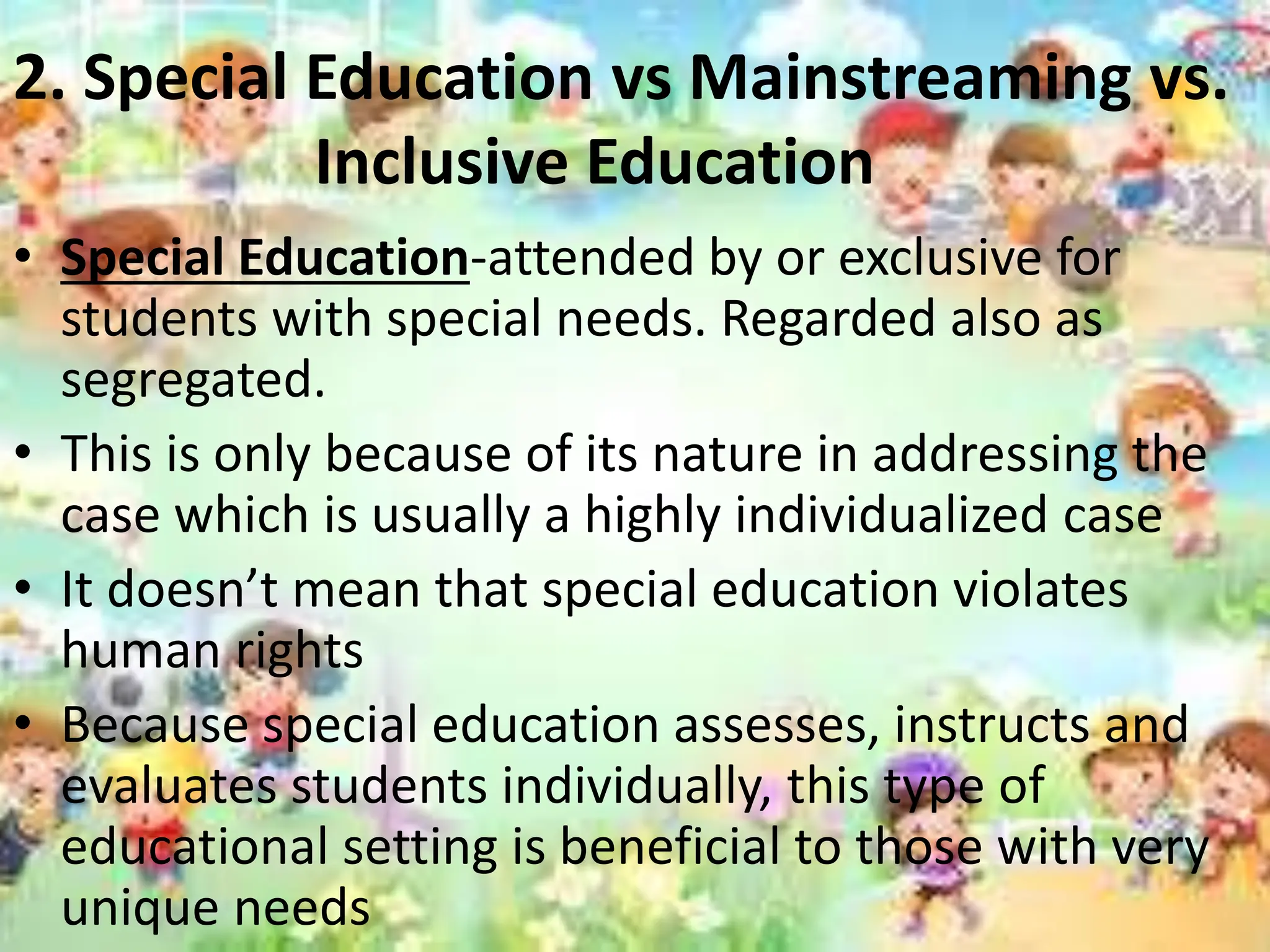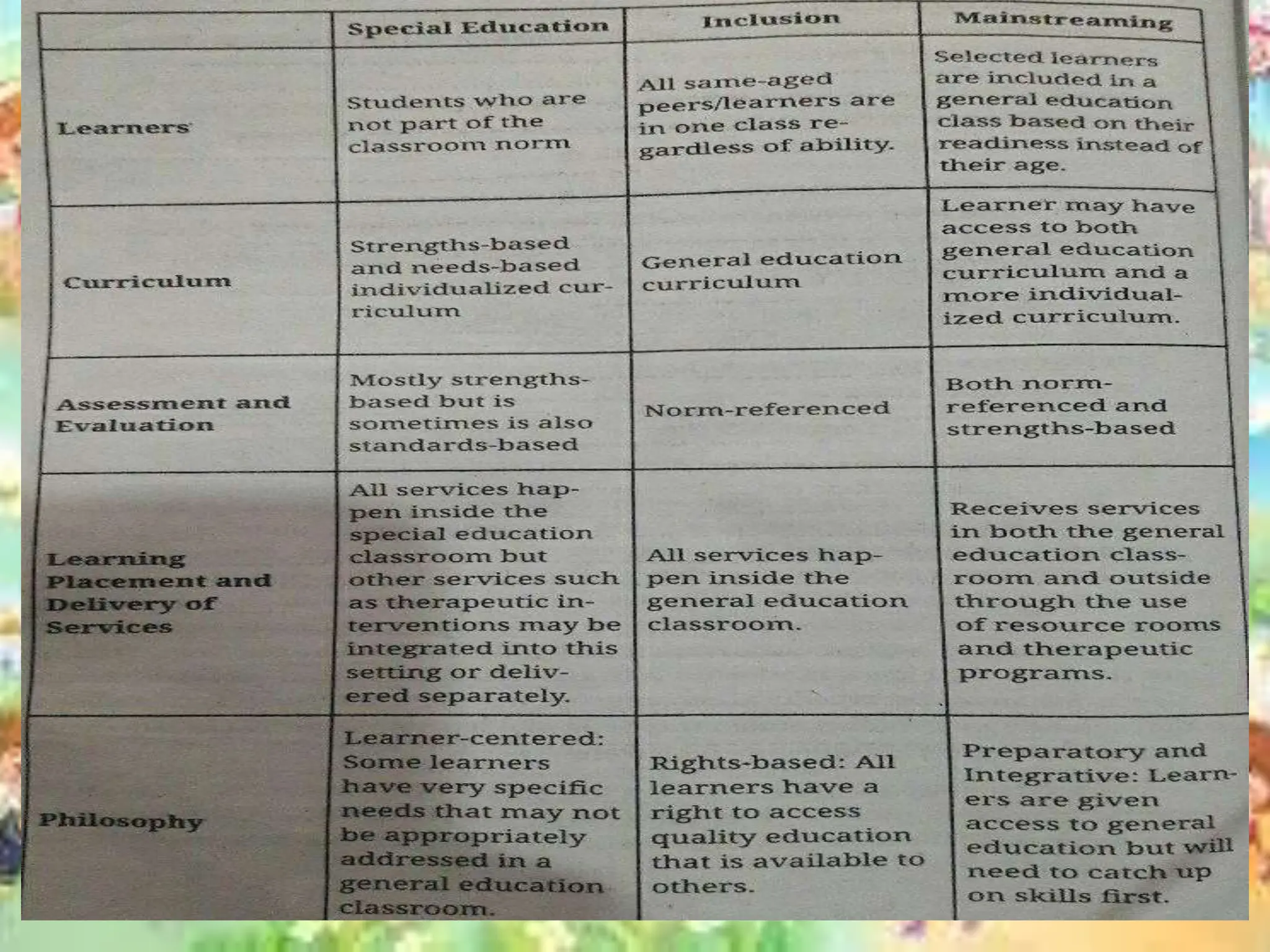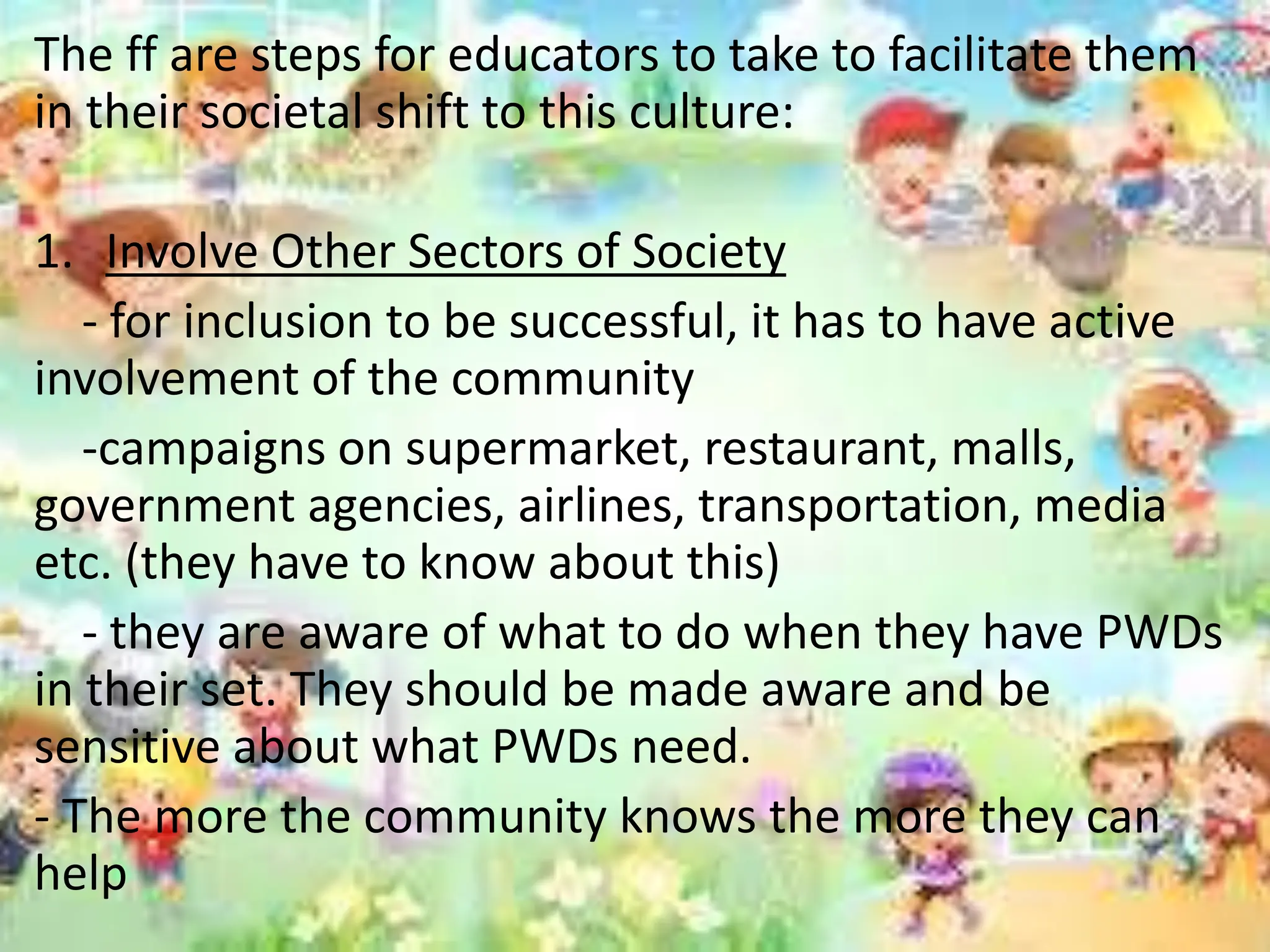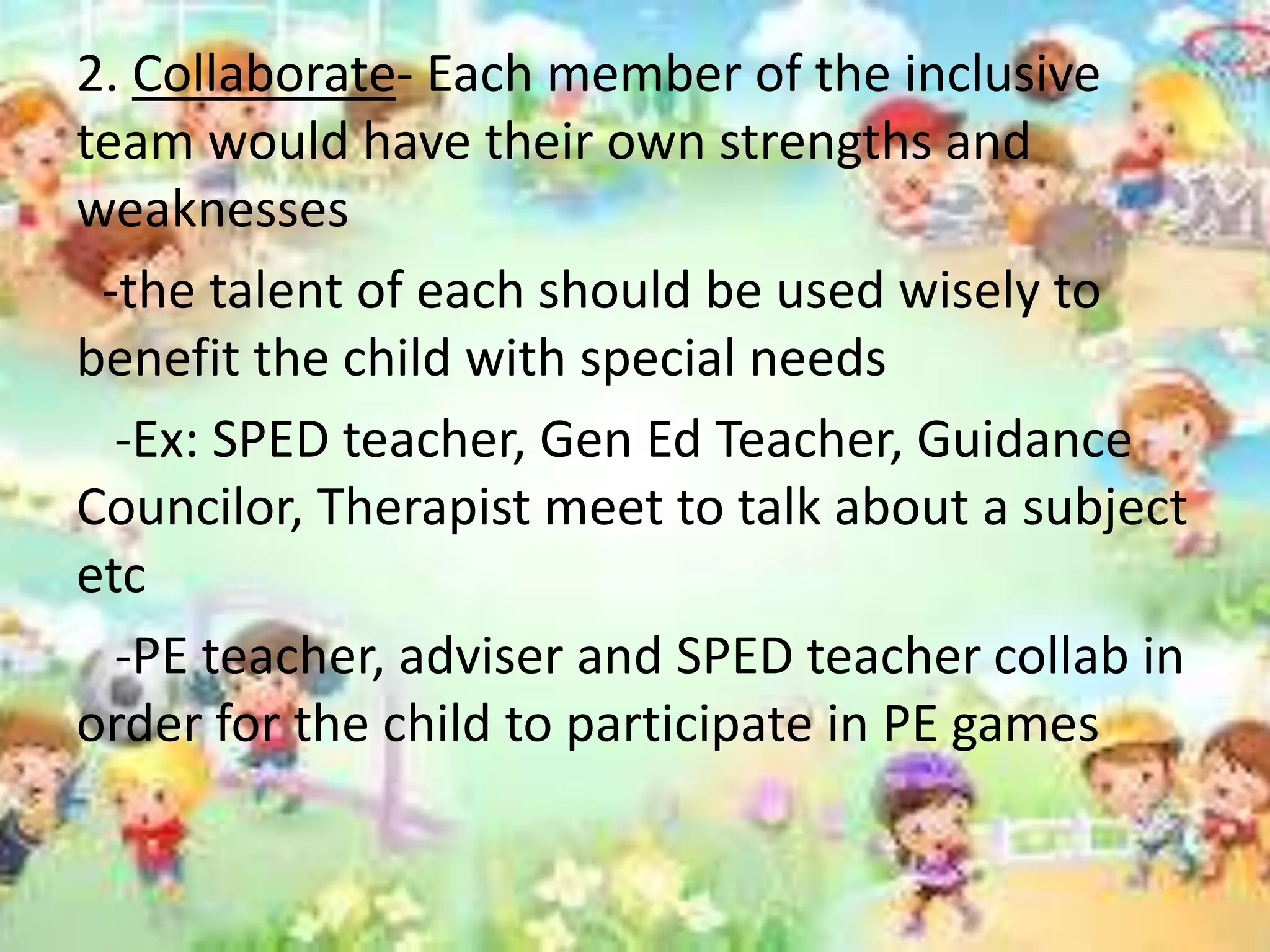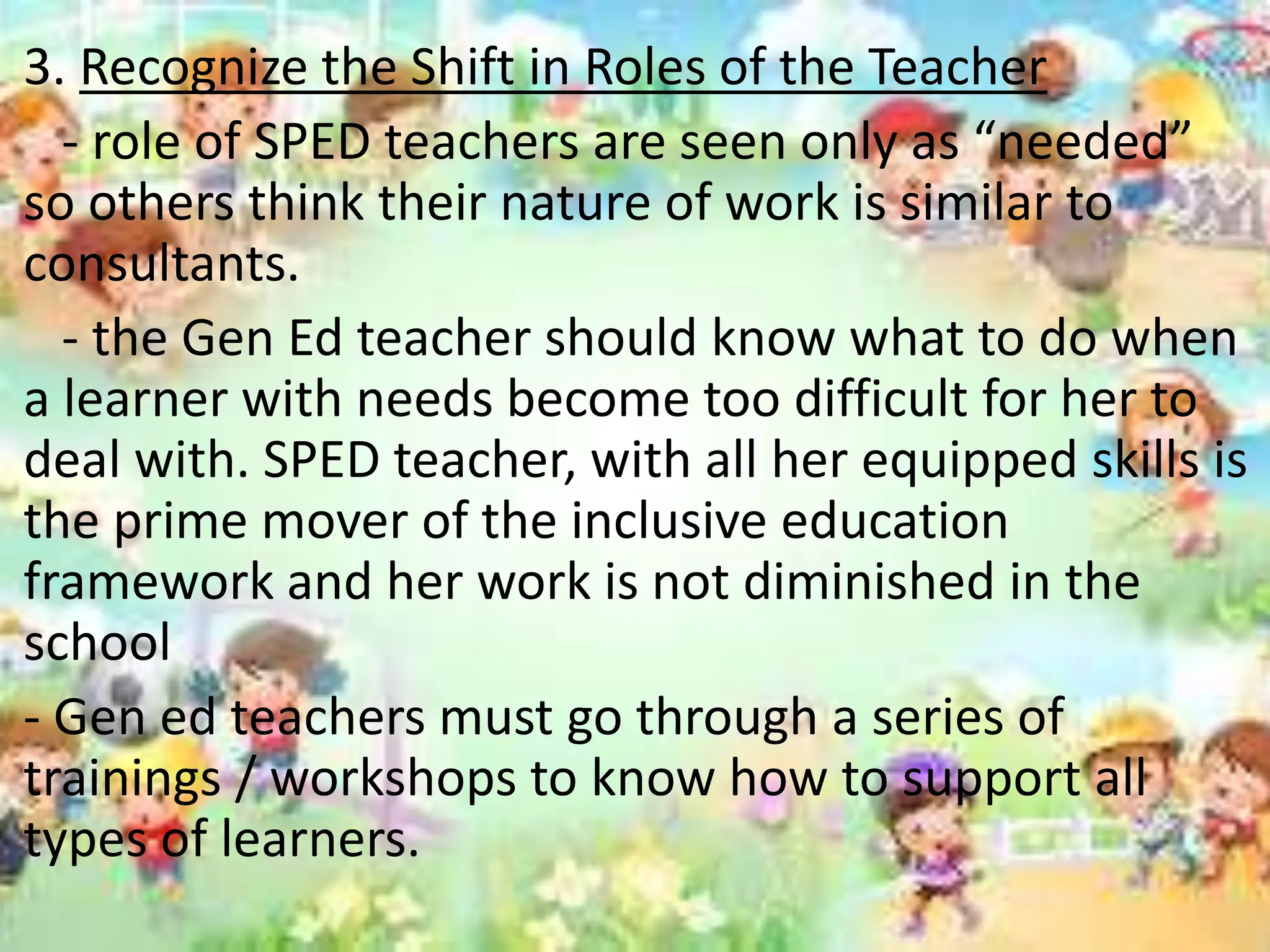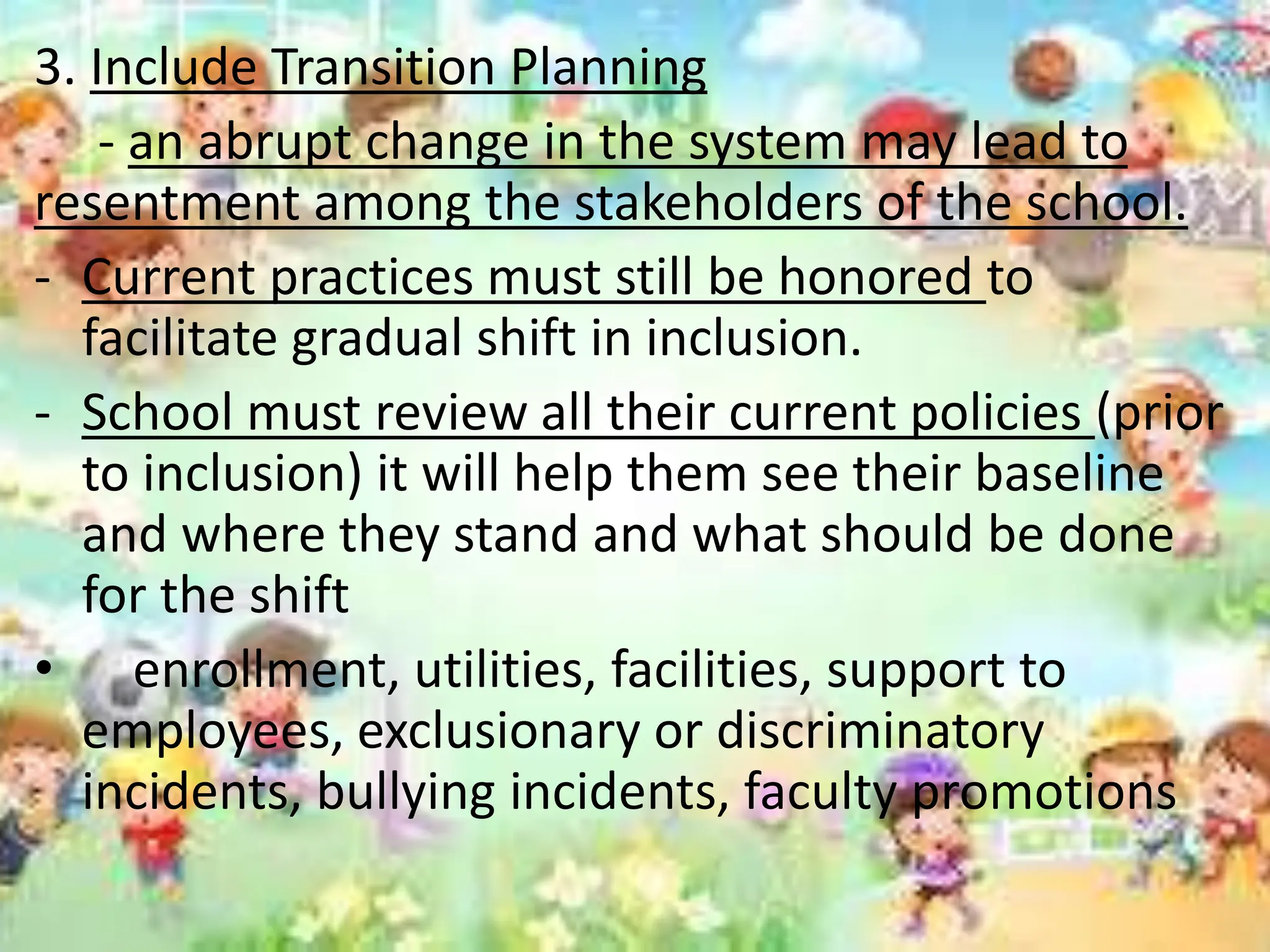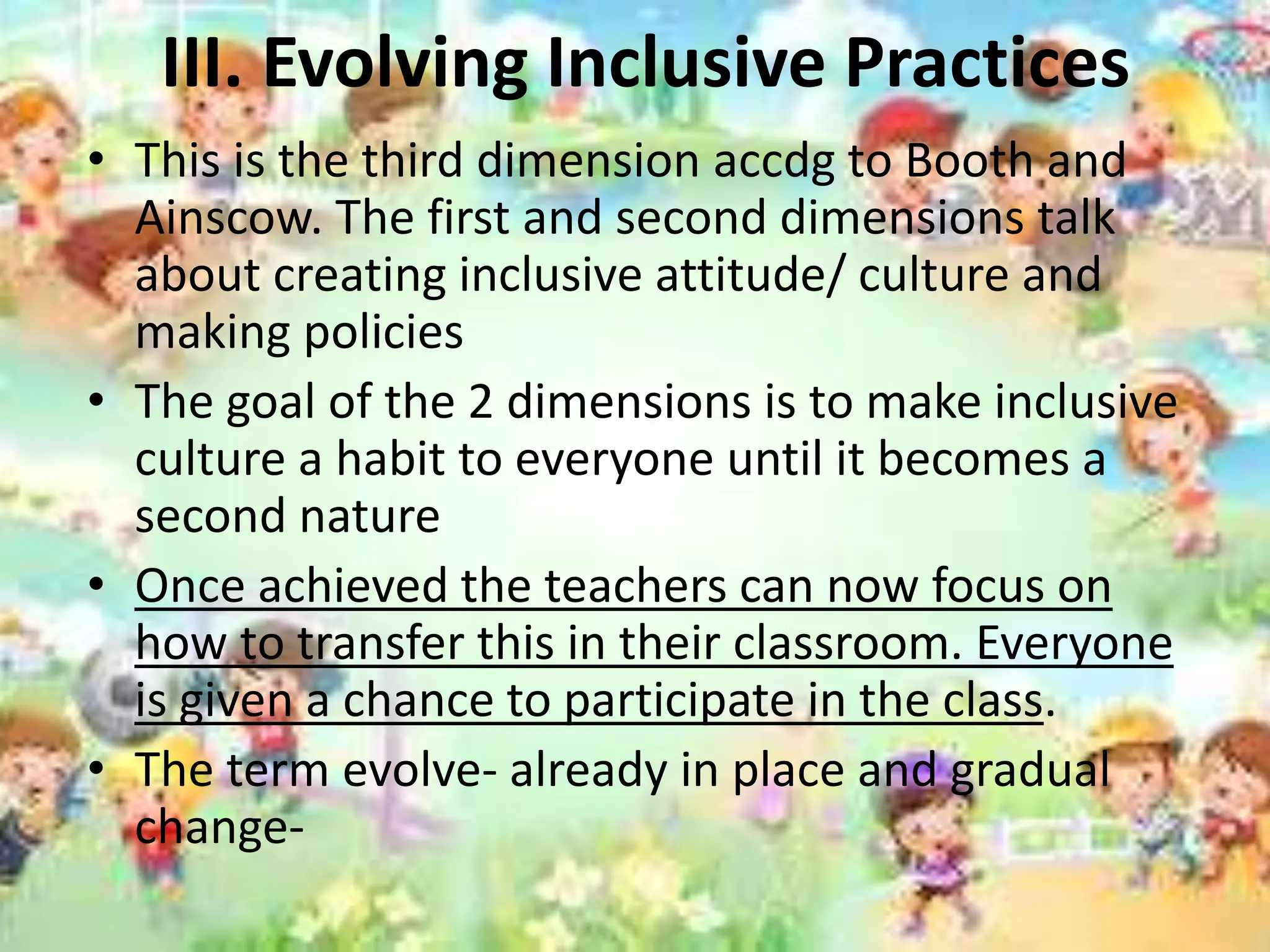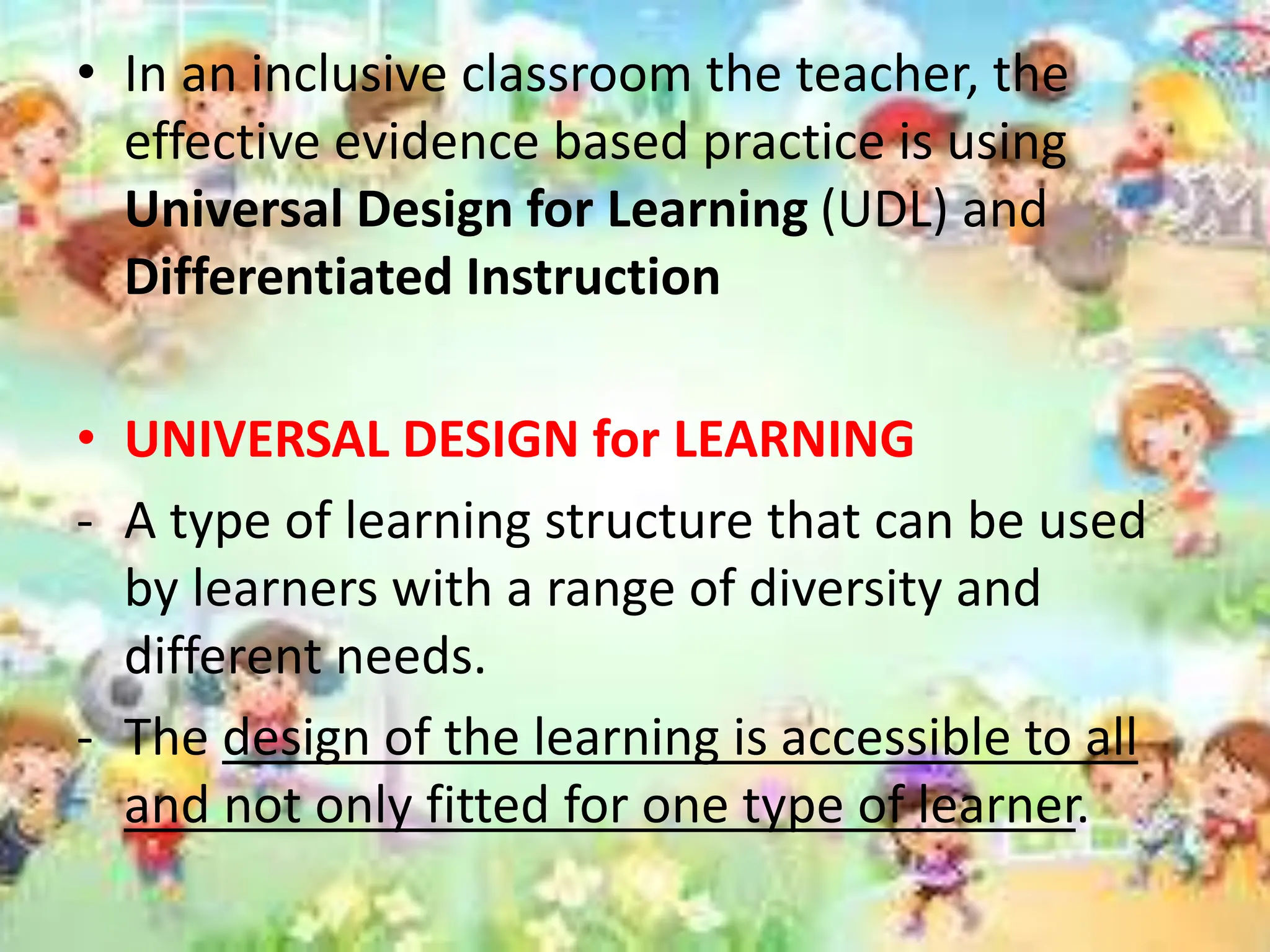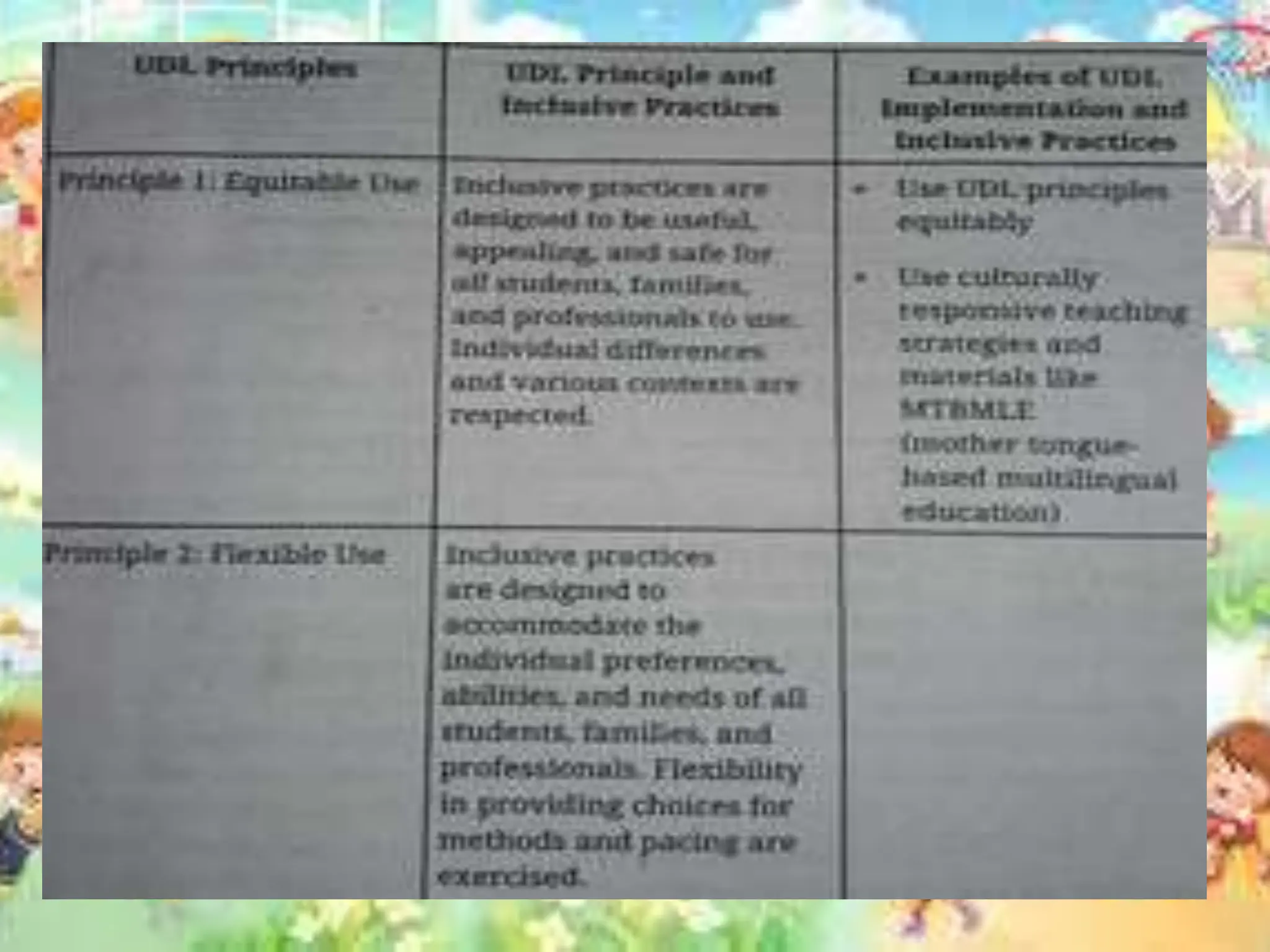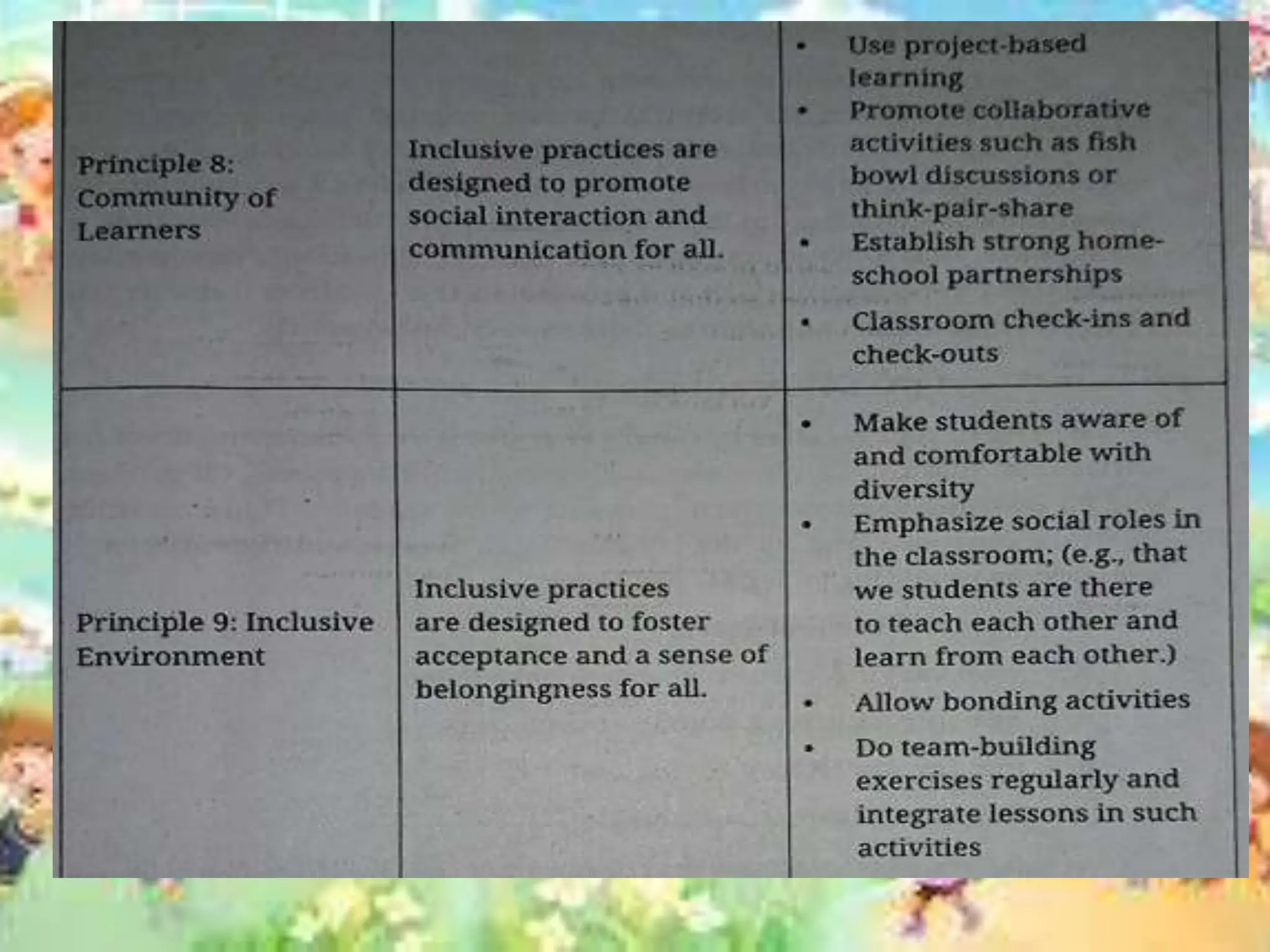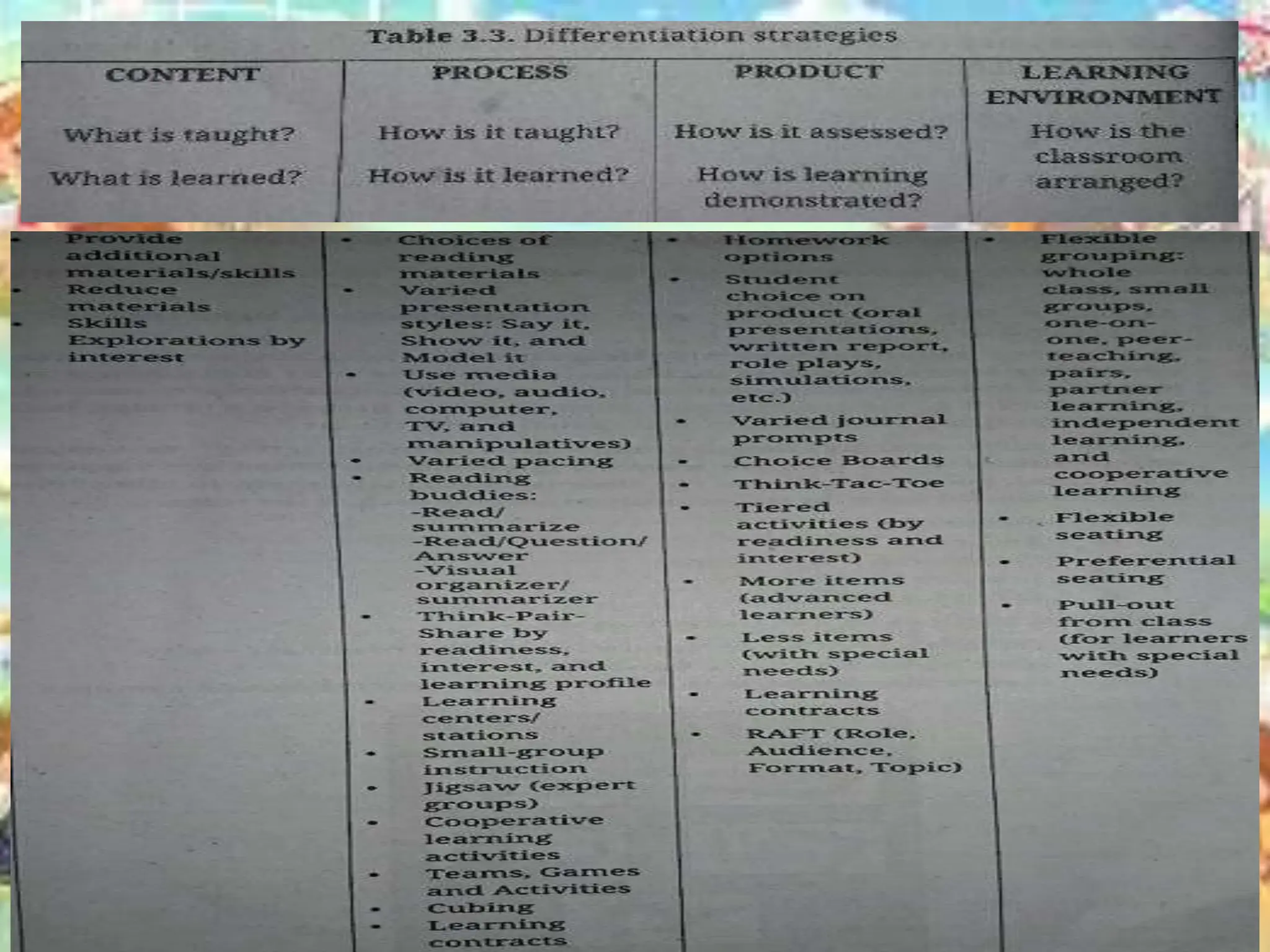The document discusses key aspects of creating an inclusive learning environment. It begins by explaining the history and frameworks that guide inclusive education practices. Specifically, it outlines Booth and Ainscow's 2002 framework, which identifies three dimensions for inclusion - creating inclusive cultures, evolving inclusive practices, and producing inclusive policies.
Next, it discusses strategies for stakeholders, such as educators, administrators, families and community members, to facilitate more inclusive cultures. This involves setting parameters for inclusion, building capacity among key individuals, and identifying and addressing barriers.
Finally, it examines how to evolve inclusive practices in the classroom through approaches like universal design for learning and differentiated instruction. Teachers can design flexible content, processes, and products to engage diverse learners
